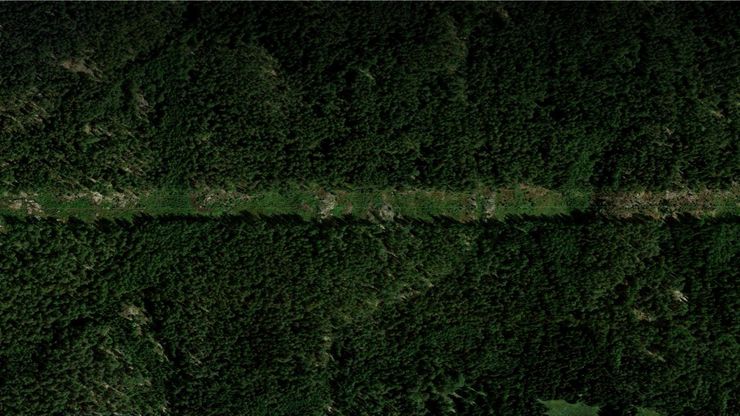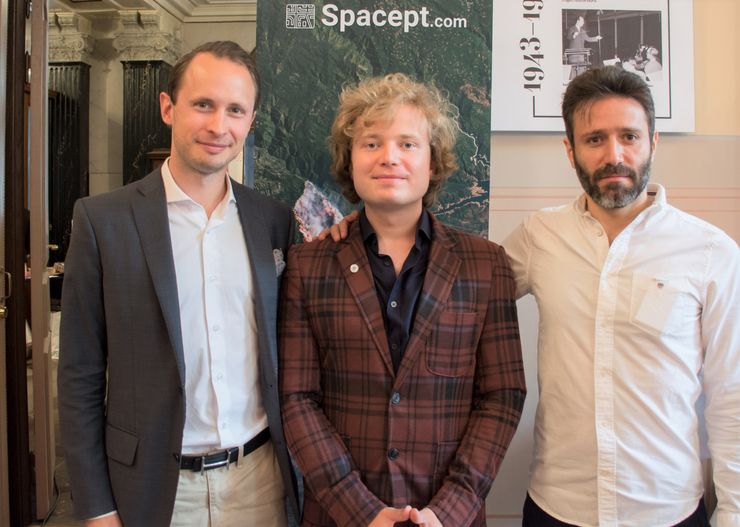An Interview with the Spacept Founders
Tell us your background and about Spacept
Sergiu Iliev (SI): I am an aerospace engineer and serial entrepreneur. After graduating from Imperial College London with a 1st class degree I have worked in research and aerospace engineering consulting.
Eric Langenskiöld (EL): I’m a Business Developer and I’ve met Sergiu from the first couple of days of the Antler startup program in Stockholm. Together we realised we would be a great team to start a business in the space sector.
Arshak Ulubabyan (AU): I’ve met Eric and Sergiu after they pitched and received funding for Spacept (back then it was called DeepSpace AI) during the Antler startup program. My background is in data science and software development. We decided to team up as equal founders as our aerospace, business and software development skills respectively are a great match for the challenges Spacept aims to solve.
All of us are interested in space and would like to eventually contribute to making humans multiplanetary.
EL: Spacept is a software platform with specialised computer vision systems that process earth observation satellite data of infrastructure to enable safer, more efficient and sustainable operation and maintenance.
All of us are interested in space and would like to eventually contribute to making humans multiplanetary.
SI: Our mission is in line with the #9 (Industry, Innovation, and Infrastructure) and #13 (Climate action) sustainable development goals of the United Nations.
Our solution saves lives and eliminates CO2 emissions while also radically reducing time and cost for infrastructure inspection. Thanks to European (Copernicus) and American (Planet and Digital Globe) satellite data providers we can deliver our infrastructure inspection software analysis anywhere on the planet at a highly attractive price: just $5 per kilometer of infrastructure which is half the price of drone inspection and a quarter of the price of helicopter inspection.
Spacept was started in early 2019 by us three, now the team has 35 developers working on a part-time and volunteer basis taking an Open Innovation business model. The main office is in Stockholm and expanding to New York later in the year. Spacept raised $110k at the beginning of the year and we are currently raising $500k as part of our Seed round.
How did the idea for Spacept come about and what was it like getting started?
SI: Eric and I worked together with an AI expert to identify business opportunities in the use of earth observation data commonly available from private companies as part of a ‘team challenge’ in the Antler startup program. We knew about the increasing occurrence in forest fires in California and one of the largest fires, that wiped out the city of Paradise had just occurred a few months earlier.
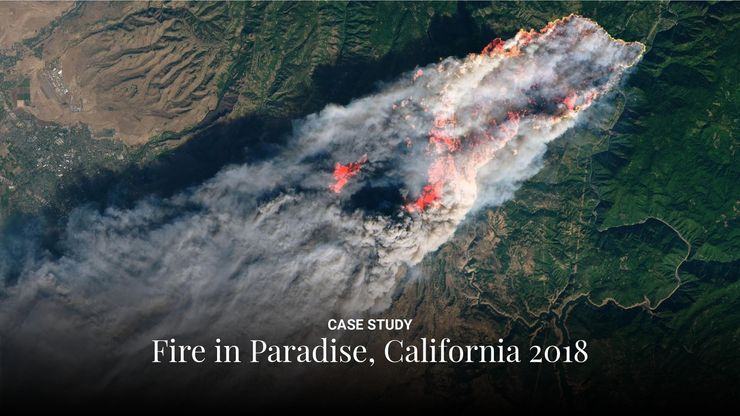
A few months earlier, I watched the live reports on the fire and saw how satellite data was used to coordinate rescue efforts to great effect. Later we found out that the fire was caused by a poorly maintained section of powerline that came in close proximity to trees, which in turn hit and damaged the line in a storm. We decided to look into this and see how we can combine AI, high resolution earth observation data and an open innovation business model. That is how we can up with “DeepSpace AI” which was the prototype business idea of Spacept.
SI: First we did lots of tests and prototyping. We needed to assess if the business was technically and financially feasible and to judge the interest of future clients. Traction is the best performance measure of a good idea, and with that in mind we spent several days on calls with key people in the powerline industry to better understand the issues they were facing and their requirements.
Traction is the best performance measure of a good idea.
EL: Then we discussed with satellite image providers to determine if we can obtain images meeting these requirements for a feasible price. Subsequently we prototyped a best-case-scenario test to see if a common computer vision system is sufficiently capable of discerning trees in satellite images. Finally, we iterated on all fronts to refine and improve the idea.
SI: In a nutshell, the first few months were very exciting and fast paced, but as the company is so dynamic and young we can say that every month feels like a first month as we take it to higher and higher levels of development.
How did you fund the company initially?
AU: We were part of a great program called Antler, which brings together aspiring entrepreneurs and gives them a small stipend for two months to free them up to develop new businesses. Subsequently, a few chosen ideas receive business funding of $110k out of which $50k is taken back as fees for the program.
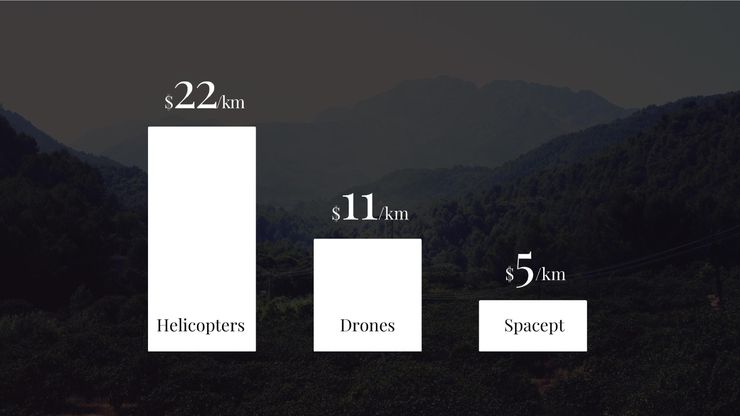
SI: With the initial funding we could incorporate the business and acquire the initial satellite data required to train and improve our computer vision systems. We invested the largest amount of funding into the Spacept team and built up a group of 35 developers from 15 different countries to collaborate and build the AI models with an open innovation approach.
Why is the problem you are solving important and how does it help human space exploration?
SI: In the powerline industry the business to business sales cycles defined as the time of initial collaboration contact to the time of incoming revenue from the contacting customers are very slow. This means that the iterative loop on the product is prohibitively large and quite incompatible with a fast-paced AI technology.
We took an innovative approach to compensating for this by partnering with fellow startups to reach our initial customers on a shared revenue basis so we can quickly iterate on our product. This enables us to test and prototype very fast whilst still accessing impactful contracts on the long term.
What are exciting milestones coming up for Spacept?
EL: In the next 6 months we are primarily focusing on improving the early version of the analytics product tailored for powerline maintenance companies.
SI: Ideally Spacept would be ready to provide predictive maintenance solution in time for the next dangerous fire season in California to prevent accidents like the one that affected Paradise last year.
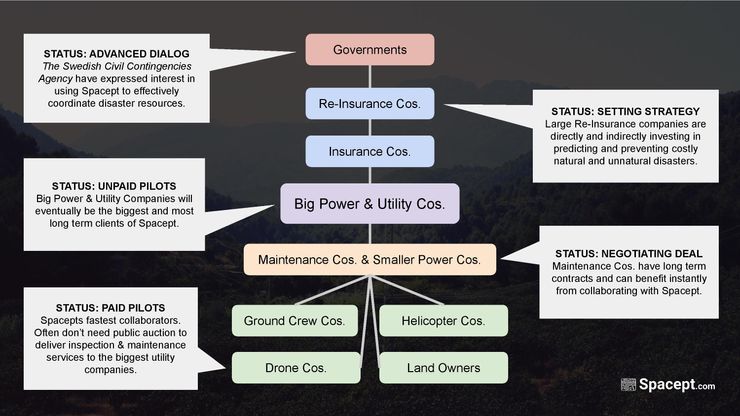
EL: In the longer term we aim to grow the customer database and start analyzing millions of kilometers of infrastructure on a recurring yearly basis. Subsequently we would like to grow Spacept to provide a more diverse portfolio of satellite analysis solutions.
What advice do you have for aspiring space entrepreneurs?
SI: In my opinion, the most important aspects in starting a company is the passion of the founders for the idea and the impact it can bring to society. This is the foundation upon which everything else is built and there is no substitute for passion and potential impact. Then it is paramount that the founders keep in close touch with the problems of their soon-to-be customers and have an intimate understanding of them.
Only then innovation on the technical solution they are developing can reach its full potential fast enough to make a positive impact on the world. Fundamentally, I think these are the key elements that everything boils down to. There are of course thousands of lessons we learned along the roller-coaster ride so far and we look further to learning more to come, but at the core of everything the above is essential.
The most important aspects in starting a company is the passion of the founders for the idea and the impact it can bring to society.
Working remotely is a great experience and team diversity is of unspeakable value, however we slightly underestimated the amount of work required to establish efficient processes for managing and coordinating a team of 38 from 16 different countries. For example, just setting up a meeting taking into consideration the various time-zones for plenum meetings is a logistical problem and takes a couple of time-saving digital tools to do efficiently. In retrospect, this could have been improved to minimize time spent on administrative tasks.
How can the public support you with your mission?
The most impactful way a reader can help is by joining our mission! We are always looking for highly-passionate people interested in learning and applying AI methods make an impact on Earth leveraging the opportunities offered by our growing space infrastructure. Simply drop us a line at hello@spacept.com.
Lastly, where can people find out more about Spacept and follow along?
The best place to follow us is our website Spacept.com and join our Slack Channel spacept.slack.com. You can follow us on LinkedIn where we mostly post, but also Twitter and Facebook.
-Eric, Sergiu, Arshak
Original interview published via Space Bandits.

